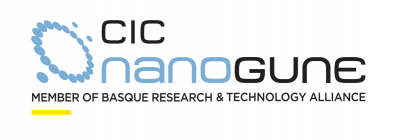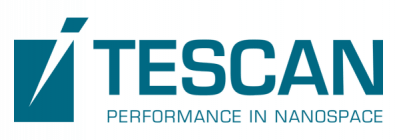CRYO Plasma FIB Workshop detailed program
10:00 |
Presentation of the CRYO Plasma FIB and the Electron Microscopy agreement |
|
|
10:40 |
Coffee-break and institutional and media lab-tour |
11:15 |
Overview of the Basque EM Infrastructure. Together we go further! |
CIC bioGUNE EM platform servicesAdriana Rojas The resolution revolution in cryoEM has expanded the number of researchers interested in this technique. However, for many scientists, the difficulties in sample preparation and/or sample screening remain a bottleneck for integrating this technique into their research questions. In CIC bioGUNE, we offer a service that focuses on these two aspects in an individualized approach that combines vitrification and screening in our JEOL2200. Using serialEM we can automatically collect up to 150 images/hour that are processed on-the-fly, providing a 2D classification to evaluate the grid's quality. Once the samples are in optimal conditions for high-end data acquisition, grids are clipped in house and delivered to the appropriate facility for remote data collection. We also offer quality control of different nanocarriers, and exosomes based on various parameters like sample integrity and/or size distribution. Our service also includes quality control of AAVs used in Gene Therapy, for which we perform an analysis of ratios of empty versus filled viruses estimated by 2D and 3D classification. Statistical analysis is performed aiming at a minimum of 10000 particles per sample. |
|
|
Marco Moller |
|
Correlative insight inside batteriesFrancisco Bonilla CIC energiGUNE, focuses on developing high-performance, safe, and sustainable energy storage systems across various technological and industrial sectors. Given the significance of batteries in energy storage, the center dedicates considerable efforts to their advancement. Batteries, being complex multi-component devices, require advanced and challenging characterization methods to study and optimize their performance throughout their lifecycle. This involves detailed analysis of battery components such as electrodes, electrolytes, separators, and collectors. The Electron Microscopy Platform (EMP) within CIC energiGUNE specializes in structural, morphological, microstructural, and elemental characterizations of materials developed at the center. With a focus on batteries, the EMP employs a correlative insight workflow of techniques optimized for analyzing batteries, ranging from full device examination to micro- and nanometric details within battery components. In this presentation, the EMP will showcase the various tools currently employed in the correlative insight workflow for batteries. It begins with the X-ray computed tomography technique (Micro-CT), which enables the reconstruction of a large-scale volume of a full battery, revealing its internal architecture without exposing battery components to air. Once Micro-CT identifies micrometric details or defects, a combination of ion-milling (IM) sectioning and field-emission scanning electron microscopy (FESEM) allows for understanding the morphological and compositional properties around interfaces and surfaces previously identified by Micro-CT. FESEM, a powerful tool at CIC energiGUNE, offers high spatial resolution in the nanometric range and can identify light elements like Li crucial for new battery technologies. Another tool beyond FESEM in the characterization workflow: is transmission electron microscopy (TEM). TEM can be used to analyze crystal phases and their nanometric-scale features. Thus, this presentation will demonstrate how outcomes from the correlative insight techniques form an essential part of research at CIC energiGUNE. |
|
Electron microscopy platform at nanoGUNEEvgenii Modin The EM lab at nanoGUNE was set up in 2009 with the aim of providing a world level electron microscopy support for the researchers at nanoGUNE, in the Basque country and woroldwide. Our efforts ensuring the efficient utilization of high-end equipment follows three mainstreams: 1) training and assisting of the users (mostly postdocs and PhD students) on the instruments so that they are able to obtain necessary data themselves, 2) performing the most challenging research by the group members; the later in many cases requires developing of the new methodologies, 3) participating in research grants and developing research in these grants in the frame of these grants. On the routine basis we execute the studies by a broad variety of EM techniques: high resolution SEM and STEM in SEM (down to 0.5nm resolution), environmental and wetSEM/wetSTEM, FIB nanofabrication and 3D volume reconstruction, high resolution aberration corrected TEM, STEM and spectrum imaging in EDX and EELS, electron tomography, electron holography, in-situ (S)TEM and a lot more. The combination of our equipment and established methodologies opens up a possibility for multiscale studies of a wide range of materials. Our facility specializes in comprehensive analysis of material structures and properties of metal alloys, ceramics, thin films, nanoparticles, 2d materials, functional coatings and soft materials such as polymers, liquids and suspensions, living cells and tissue. The advanced tools and methods help to understand the structure, and chemical composition, and explore the relationship between structure/composition and functional properties. This way, our facility provides a comprehensive array of tools and techniques for analyzing the structure and properties of diverse materials, making the electron microscopy facility a valuable resource for researchers and industries alike. |
|
13:00 |
Lunch and lab-tours with the nanoGUNE EM team |
14:30 |
Cryo characterization workflows for biological samples and batteries |
Plasma FIB technology pushing the boundaries: Advancements in Cryo-ET Sample Preparation and other cryo-FIB applicationsOndrej Sulak Cryo-electron tomography (cryo-ET) enables the study of biological samples at near-native states, yet sample preparation remains a bottleneck. Traditional Gallium FIB methods are precise but slow, hindering throughput. Plasma FIB, particularly Xenon-based, offers faster processing, addressing this limitation. This presentation explores optimized workflows for cryo-TEM sample preparation, utilizing technology of the TESCAN AMBER X cryo-plasma FIB-SEM. These advancements not only accelerate sample preparation but also enable the analysis of larger specimen volumes, enhancing our understanding of biological structures in a larger context. Additional benefits are TESCAN's True X-Sectioning kit and Rocking Stage, that allow for artifact-free processing of diverse specimens, including soft tissues in hard shells. This innovation eliminates curtaining artifacts, typical for traditional FIB work, and thus enabling comprehensive analysis of specimens with mixed compositions. Through these advancements, cryo-ET becomes more accessible for a broader range of samples, from single cells to complex tissues, paving the way for new discoveries in structural biology. This presentation highlights the transformative potential of plasma FIB technologies and enhanced sample preparation techniques in advancing not only cryo-ET research. |
|
Multimodal Characterization of Lithium-Ion Battery Materials Using TESCAN Plasma FIB-SEM with Integrated ToF-SIMSJiri Dluhos The primary objectives of battery innovations include optimizing production processes, improving the performance of existing battery technologies, and developing new energy storage solutions with ample capacity, long lifespans, rapid charging rates, and eco-friendliness for a fossil fuel-free future. Achieving these innovation goals relies on effective, comprehensive, multiscale structural, and chemical characterization of battery materials, encompassing the anode, cathode, electrolyte, separator, and their interfaces. In this presentation, we focus on micro- and nanocharacterization of battery materials using the Focused Ion Beam Scanning Electron Microscope (FIB-SEM) with integrated Time-of-Flight Secondary Ion Mass Spectrometry (ToF-SIMS) technique. This combination provides essential insights into the internal composition and processes of batteries, crucial for enhancing performance and extending lifespan. |
|
15:30 |
Lab-tours with the nanoGUNE EM team |
Agenda
| Mon | Tue | Wed | Thu | Fri | Sat | Sun |
|---|---|---|---|---|---|---|
|
1
|
2
|
3
|
4
|
5
|
6
|
7
|
|
|
|
|
|
|
|
|
|
8
|
10
|
11
|
12
|
13
|
14
|
|
|
|
|
|
|
|
|
|
|
15
|
16
|
17
|
18
|
19
|
20
|
21
|
|
|
|
|
|
|
|
|
|
22
|
23
|
24
|
25
|
26
|
27
|
28
|
|
|
|
|
|
|
|
|
|
29
|
30
|
31
|
1
|
2
|
3
|
4
|
|
|
|
|
|
|
|
|







